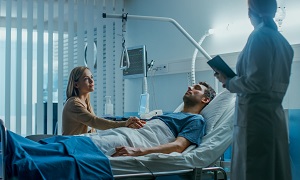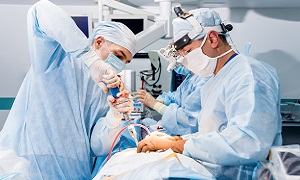Best Vertebroplasty Doctors in India
Best Vertebroplasty Hospitals in India
- City: Bengaluru, India
Hospital Highlights:
- Fortis Hospital Bannerghatta, Bengaluru was established in 2006.
- The hospital is a 276 bedded multi-specialty tertiary care facility.
- The hospital specializes in cutting-edge medical technology and dedicated patient care services.
- The hospital is equipped with state-of-the-art technologies like trans-radial angioplasty, trans-abdominal cardiac surgery, and computerized TKR navigation surgery.
- The hospital provides specialty medical services in cardiology, cardiac surgery, orthopedics, neurology, neuro-surgery, GI, and Minimal Access Surgery (MAS).
- City: Chennai, India
Hospital Highlights:
- Fortis Malar was established in 1992 and was formerly known as Malar Hospital.
- The hospital specializes in cutting-edge medical technology and dedicated patient care services.
- The hospital is multi-specialty, tertiary care facility with 180 beds.
- The hospital offers comprehensive medical care in specialties such as cardiology, cardio-thoracic surgery, neurology, neurosurgery, orthopedics, nephrology, gynecology, gastroenterology, urology, pediatrics, and diabetes.
- City: New Delhi, India
Hospital Highlights:
- Established in 1996, Pushpawati Singhania Research Institute is one of the top hospitals in the NCR region, as well as one of the top facilities in India for gastroenterology. The hospital is one of South Asia’s first institutes in medical and surgical treatment for diseases related to digestion.
- The hospital is equipped with state-of-the art facilities coupled with the latest equipment as well as renowned consultants from various parts of India as well as other parts of the world.
- City: New Delhi, India
Hospital Highlights:
- State-of-the-art technology and devoted healthcare professionals have been brought together under one roof at Venkateshwar Hospital to provide genuine medical care. The hospital’s professionals work together as a team to deliver the best possible treatment to their patients, using the most sophisticated equipment and information technology.
- Venkateshwar Hospital’s mission is to attain global excellence in healthcare by employing evidence-based, ethical clinical practices and cutting-edge technology by a team of highly skilled experts.
- City: New Delhi, India
Hospital Highlights:
- Sir Ganga Ram Hospital, New Delhi is known to provide the latest medical procedures with the latest technology in all of its units.
- The hospital has a team of reputed doctors, nurses, and healthcare professionals that ensure that patients receive quality care at affordable costs.
- Staffed with a team of highly qualified doctors, dedicated nurses, and paramedical and non-medical staff, the hospital aims to lead in healthcare delivery, medical education, training, and research.
- As per the vision of the founder, the hospital also provides free treatment to the economically weaker sections of society.
- Sir Ganga Ram Hospital also provides training to young doctors under the Diplomate in National Board(DNB) program. The DNB program at the hospital was started in 1984 and it is known for currently running the maximum number of DNB specialties in the country. It also has the distinction of having the first bone bank in India.
- City: Kerala, India
Hospital Highlights:
- Established in 2019, Apollo Adlux Hospital is the first Apollo Hospital in Kerala and the 73rd hospital owned by Apollo Group in India. With the state’s most advanced, comprehensive healthcare infrastructure and cutting-edge technologies, Apollo Adlux Hospital stands as an example of medical excellence in Kerala.
- With over 34 multi-specialty departments, the hospital believes in providing the best quality treatment to its patients at affordable rates, ensuring comfort at their difficult times.
- The 300-bed hospital is managed by a team of highly qualified and experienced experts who delivers exceptional hospitality to their patients and treats them with great compassion.
- With its affiliation with the Apollo Hospitals Group, the hospital aims in providing patients with top-notch healthcare services while also serving communities in Kerala.
- The hospital has good railway and road connections, and is conveniently close to Cochin International Airport.
- City: Gurugram, India
Hospital Highlights:
- Situated near DLF Cyber City, Gurugram, Narayana Superspecialty Hospital is one of the top medical facilities in the Delhi NCR region, catering to the needs of the people. Known for its commitment to quality medical care and patient service, the hospital is a state-of-the-art facility with planned and well-equipped sections, which includes a spacious OPD area as well as comfortable patient rooms.
- It is the closest super-specialty hospital from Indira Gandhi International Airport towards Gurugram, and also the nearest super specialty hospital from DLF Cyber City. It is also close to major residential areas in Gurugram.
- It is part of the renowned Narayana Health Group. Established in 2000, by Dr. Devi Shetty, a renowned cardiac surgeon, it has grown to be one fo India’s leading healthcare groups.
- City: Noida, India
Hospital Highlights:
- Fortis Hospital, Noida, stands as one of the oldest and most trusted healthcare institutions in the region, setting a benchmark for comprehensive medical care.
- As the second mega hub hospital in the Fortis Healthcare Group, Fortis Hospital, Noida, upholds a legacy of trust among more than 1.2 million patients. By integrating top-tier professionals with cutting-edge technology, the hospital delivers superior treatment across various medical disciplines.
- Specializing in advanced Neurosciences, Orthopedics, Kidney and Liver Transplant Programmes, Fortis Hospital, Noida has successfully performed over 1,500 transplants, solidifying its reputation as a leader in specialized medical interventions.
Vertebroplasty
Vertebroplasty is a procedure that can help to stabilize compression fractures in the spine. A special cement is injected into a fractured vertebra which can help in relieving the pain and restoring mobility.
The procedure is helpful for people suffering from severe, disabling pain which can be caused by a compression fracture. People who undergo the procedure can find pain relief, increased mobility and reduced use of pain medications after the procedure.
Purpose
The procedure is generally recommended by doctors if:
- You are suffering from severe/prolonged pain or immobility
- Traditional methods for treating your fractured vertebra or back pain fails to provide efficient results
- The fractured vertebra is leading to more serious complications which can include deep vein thrombosis, respiratory problems, acceleration of osteoporosis, loss of height and emotional or social issues.
The procedure is considered a minimally invasive surgery as it is done through a small puncture in the skin, instead of an open incision. Typical vertebroplasty can usually take over an hour to complete.
Preparation
It is likely that your doctor will ask you to take no food or drink less than six hours before the vertebroplasty procedure is performed. If your surgery has been scheduled in the morning, the doctor might require you to consume no food or drinks after midnight on the night before the procedure. You may however drink a small amount of water around 2 hours before your procedure.
It might also be important to stop taking certain medications, as advised by your doctor, in the days leading up to the surgery. Some of the medications might need to be reduced, though some will need to be completely discontinued. It will generally depend on your health status.
Procedure
First, the patient will need to lie down comfortably on the table where the procedure will be performed. Local anesthesia will be next administered so that you will not feel any pain during the procedure, though you will remain awake. Using fluoroscopy, which displays x-ray images on a video monitor in real-time, the doctor will insert a bone biopsy needle into the fractured vertebra through a small puncture in the skin. The fluoroscopy helps to position the needle, inside the vertebrae compression fracture without causing any damage to a nearby critical structure, such as your spinal cord.
A specially formulated bone cement will next be injected under pressure, directly into your fractured vertebrae. The bone cement will fill the cracks within the bone so that a type of internal cast can be created for stabilizing the vertebral bone.
Then the needle is removed and the cement hardens in around ten minutes, which will be congealing the fragments of the fractured vertebrae as well as stabilizing the bone. The small skin puncture is then covered with bandages.
After the procedure
The patient will be kept under observation for some time to ensure that the medications have worn off and the bone cement has been hardened without causing any complications. It might be required for some surgeons that the patient remains lying for an hour or two before they walk around.
After your observation period is over, you are able to leave the medical facility and should be able to go home the same day. Patients are generally advised not to drive themselves home the day of the procedure and therefore, it is better if a friend or relative is able to drive them home. If further observation is required after the procedure then a short stay might be required at the hospital.
Recovery
For the first 24 hours after the procedure, bed rest is important. Generally, you can increase your activity levels gradually and most regular medications might be resumed. There might be some soreness at the puncture site for a few days which can be relieved with an ice pack.
Patients generally experience pain relief within 24 to 48 hours after the surgery. It might be possible to return to more strenuous physical activities after around 6 weeks but until then, it is best to avoid them.
A few weeks after your surgery, to ensure that your recovery is going properly, you should schedule an appointment with the doctor.
Risks
Vertebroplasty is generally considered a safe procedure for reducing pain which is caused by a vertebral compression fracture. However, surgery has some risks. Though the complication rate is less than four percent, some of the risks can be quite serious and need to be considered before you make a decision to undergo the surgery.
Like most surgeries, few patients may experience infection, excessive bleeding, or allergic reaction. Other potential complications of the surgery include:
Cement leakage- This issue occurs when the bone cement leaks outside of the intended vertebral compression fracture’s cracks. Though bone cement leaking outside rarely leads to complications, the cement can leak onto a nerve root, or the spinal cord, which can increase pain, tingling, numbness, and/or weakness.
Paralysis- As Vertebroplasty is performed near your spinal cord and other important nerves, if there is an error in the needle’s placement, it might potentially result in damage that can cause weakness and/or paralysis of one or two limbs.
Failure to Reduce Pain- Vertebroplasty may sometimes not improve the symptoms, even if the procedure went well, without any errors or complications.
There are many factors which may increase the risk of having unsuccessful vertebroplasty, leading to complications:
- Delayed procedure- If the procedure is not performed within around two months of your initial fracture, then the procedure is less likely to provide proper pain relief.
- Lower-quality fluoroscopy equipment- One important aspect of fluoroscopy is that it gives the surgeon an ability to see the location of the needle as it enters the body, and gets placed into the vertebra’s damaged part. There is evidence suggesting that when lower-quality fluoroscopy equipment is used, such as the portable version found in operating rooms of some hospitals, complications of vertebroplasty might go up.
- Compression fracture caused by cancer– When the procedure is done for vertebral compression fractures which were caused by cancer, the complication rate is around ten percent.
It is also worth noting that after the procedure for a few hours, your pain might worsen. However, this is not a reason for worry, as the pain will not last for a long time. Depending on a specific condition, you might face a few other risks. It is best to talk to your doctor regarding your specific condition so that you can understand all risks and benefits of the surgery.











